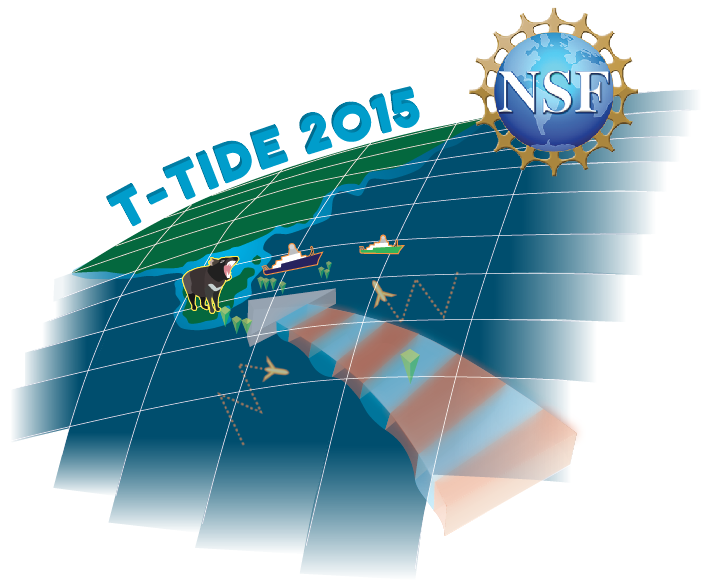The Tasman Sea Internal Tide

Surface tides supply about 1 TW of power to internal tides as tidal currents attempt to flow over undersea mountains. Most this internal-tidal energy propagates away from its generation region in the form of low-mode internal tides. The ultimate fate of this energy is unknown. The specific geography of energy dissipation has a large impact on the overall circulation of the ocean, its biological functioning, and our climate.
One of the most energetic and focused beams of internal-tide energy is generated south of New Zealand. It propagates 1,500 km across the Tasman Sea, and strikes the Tasman continental margin. The goal of the NSF-funded Tasman Tidal Dissipation Experiment (T-TIDE) is to see what happens next.
T-TIDE and companion experiments T-Beam and T-Shelf will together examine the dissipation of the internal tide as it shoals on the Tasmanian continental slope. T-Shelf will focus on the shallow Tasmanian continental shelf, and the costal consequences of the incoming tidal energy. T-Beam will enhance T-TIDE by providing synoptic measurements of the incident internal-tide energy flux , providing the initial conditions for the dissipation experiments.
A decade ago, the Hawaiian Ocean Mixing Experiment (HOME) provided a comprehensive look at the internal tide generation process. Together, T-TIDE, T-Beam and T-Shelf will complete that life cycle by providing the first comprehensive observations of an internal-tide beam as it propagates through the open ocean and dissipates and/or reflects from a continental slope.
The T-Teams will be out at sea from January 9 to March 11, 2015 on the R/V Revelle and the R/V Falkor deploying mooring, using state of the art instruments all to measure the internal waves in the Tasman Sea!
Support for this research is provided by the National Science Foundation (OCE-1434722, OCE-1129763, & 1129782) and by the Schmidt Ocean Institute, providing ship time aboard the RV Falkor.


